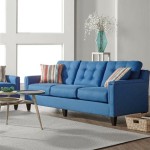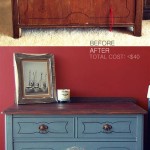Non-Toxic Furniture On a Budget
Furnishing your home can be an exciting process, but it’s important to consider the materials used in your furniture. Many conventional furniture pieces contain harmful chemicals and toxins that can negatively impact your health and the environment. However, finding non-toxic furniture on a budget can seem like a daunting task. Fortunately, there are strategies and resources available to help you create a healthy and stylish home without breaking the bank.
Prioritize Natural Materials
One of the most effective ways to ensure non-toxic furniture is to prioritize natural materials. These materials are less likely to contain harmful chemicals and VOCs (volatile organic compounds). Here are some popular options:
- Wood: Opt for sustainably sourced hardwoods like oak, maple, cherry, or walnut. Avoid particleboard and MDF (medium density fiberboard), which often contain formaldehyde and other toxins.
- Bamboo: A fast-growing and renewable resource, bamboo is naturally strong and durable. It is often used in furniture frames and flooring.
- Cotton: A natural fiber, cotton is often used in upholstery fabrics. Look for organic cotton, which is grown without pesticides or herbicides.
- Wool: A naturally fire-resistant and durable fiber, wool is an excellent choice for upholstery or rugs. Choose wool from reputable suppliers that use sustainable practices.
- Jute: A strong and versatile natural fiber, jute is used in rugs, upholstery, and furniture frames.
When shopping for natural materials, look for certifications like Forest Stewardship Council (FSC) for wood and Global Organic Textile Standard (GOTS) for fabrics. These certifications ensure that the materials are sustainably harvested and produced without harmful chemicals.
Consider Used and Vintage Furniture
Buying used or vintage furniture can be a fantastic way to acquire high-quality pieces at affordable prices. Many antique and second-hand furniture stores offer well-made pieces that have been well-loved and cared for over time. This approach is also more sustainable than buying new, as it reduces waste and extends the lifespan of existing furniture.
When purchasing used furniture, take time to inspect it for any signs of damage or wear and tear. Consider refinishing or reupholstering older pieces to give them a fresh look and extend their lifespan even further. Repurposing existing furniture can also be a great way to create unique pieces that fit your style and budget.
DIY and Upcycling Projects
Engaging in DIY projects and upcycling can be both cost-effective and environmentally friendly. Many furniture pieces can be easily renovated using natural paints, waxes, and stains. This allows you to customize your furniture and ensure it meets your non-toxic standards. There are numerous online resources and tutorials available to guide you through various upcycling techniques, from painting to reupholstering.
When choosing paints and finishes, look for products that are VOC-free, water-based, and certified organic. Ensure the products are labeled as non-toxic and safe for children and pets. By investing in quality materials and tools, you can create beautiful and healthy furniture pieces that reflect your individual style.
Research and Support Ethical Brands
Several companies prioritize sustainability and non-toxic practices in their furniture production. Researching these brands and supporting them can be an excellent way to find affordable options while ensuring you purchase furniture that aligns with your values. Look for companies that:
- Use certified sustainable materials.
- Employ eco-friendly manufacturing processes.
- Offer transparency about their ingredients and production methods.
- Support fair labor practices.
Many of these brands offer online resources and information about their commitment to sustainability. By supporting ethical brands, you contribute to a more sustainable and responsible furniture industry, encouraging others to adopt similar practices.
Finding non-toxic furniture on a budget requires research, planning, and a commitment to sustainable practices. By prioritizing natural materials, exploring used furniture options, and engaging in DIY projects, you can create a healthy and stylish home without compromising your values or your budget.

Organic Furniture Going Green And Nontoxic On A Budget Healthy Home Economist

10 Non Toxic Couches With Sustainable Materials 2025 The Good Trade

10 Non Toxic Couches With Sustainable Materials 2025 The Good Trade

Organic Sofas Eco Friendly Non Toxic Sofa For Sale The Futon Shop

Non Toxic Furniture Brands Safe Healthy Options For Your Home
A Complete Guide To Non Toxic Sofa Brands 2025 My Chemical Free House

Organic Sofas Eco Friendly Non Toxic Sofa For Sale The Futon Shop

Non Toxic Couches Furniture Swatches Tested For Pfas Indicators

Sabai Design Affordable Sustainable Convenient Furniture
A Complete Guide To Non Toxic Sofa Brands 2025 My Chemical Free House
See Also








